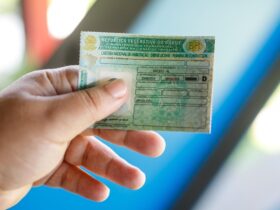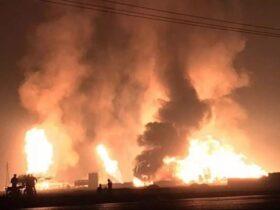While the earthquake of the 6.2 mugister and the following aphtershoki that occurred on April 23, 23, users of social networks are discussing what measures they can take both individually and institutional.
Experts believe that a possible earthquake will create a possible earthquake, and will affect every street in the city. Nevertheless, many people do not know how many earthquakes the street risks on which he lives, or whether his buildings are durable.
The interactive web site of the danger of the Earthquake of Turkey, prepared by the President of the Ministry of the Interior (AFAD), allows citizens from all over the country to analyze the risk of earthquakes on their streets.
Users can use this interactive card as a starting point by studying the acceleration of the earthquake and the value of risk in the regions that they live by introducing an address or coordinate.
The map, which first entered into force in 1996, was updated by AFAD in 2018. Unlike the previous card in the update, instead of the “zones of the earthquake”, the values of “the largest acceleration of the Earth” were shown.
AFAD announced last week, releasing the danger map of the Turkish earthquake in 2025 and announced a repeated position.
How to use an interactive card?
Interactive cards mean websites on which users can choose certain coordinates, get special information for the regions and the planet between different areas.
You can achieve an interactive AFAD risk card at his address.
After entering the address, users enter the system using information about the electronic government. This step is necessary for authentication.
After entering the system, the section “Request to the address” is located in the upper left corner of the home page. Users can request information by introducing information about your province, district and environs here.
Acceleration can change even on the streets close
On an interactive map, users who are looking for in any area or street can see that the appearance of the street risk differs from another street nearby.
Because there are a number of factors that affect this risk. Paul type is one of them. Stone floors grow fewer waves of earthquakes, while soft, free floors (for example, areas of filling, alluvial) grow earthquake waves and cause great accelerations.
In the same way, the distance to the fault line, grounding forms and groundwater levels can affect these accelerations. In fact, the floors saturated with water can become thinned, and this can increase acceleration.
Sample risk analysis: Silivri State Hospital
In the 6.2 earthquakes that occurred on Wednesday, images of structures in the building were reflected on social networks, while patients in the state hospital were evacuated to the hospital of the hospital.
You can show the street and the district on an interactive map.
It can be seen that the street Nedim Bayzgul, where the Hospital of Silivri is located on the map, is marked with light and other streets, not far from the hospital in a darker red in the risk analysis of the earthquake.
To view the analysis of the risks of the nonsense Bazgul Sokak, you need to follow these steps:
1. Press the “Get Information” button in the left menu.
2. Then the cursor leads them to the street you want to receive and click on it.
3. The open window contains a layer, value, breadth and information about longitude.
Here, users can maintain information about the level and value. This information provides an analysis of the risk of an earthquake of the selected street.
Information received from the card in the example of the State Hospital Silivri, “PGA 475 / 0.320 g”.
What does PGA 475 and 0.320 g mean?
PGA 475 approximately layers: “This region will be every 475 years in the earthquake, how much to shake the land (acceleration) how much?” means.
Distributed earthquakes, which every 475 years often mean large and serious shaking, which is compatible with the great earthquake in Istanbul, which experts expect.
In other words, the analysis of the risks on the AFAD map is calculated in accordance with the large scenario of the earthquake, which will be 475 years.
The PGA expression here means “maximum acceleration of the earth.” This statement says that this place will quickly turn around during the expected earthquake.
“0.320 g” is used to indicate the risk value. The letter “G” in this statement is a unit of measure used for gravity.
The interpretation of these values in terms of the risk of earthquake as follows:
0.1 g and below: Low risk regions
Between 0.1 g – 0.3 g: Average risk regions
0.3 g – 0.6 g: High risk regions
More than 0.6 g: Very high risk regions
In the case of a state hospital, the value of 0.320 g, the area marked on the map means that the place will swing with an impulse of 32 percent of severity during a large earthquake, which can be every 475 years.
0.320 g exactly at the beginning of the high -risk zone.
What should be done after studying the risk value?
All this calculation shows that the area where the hospital building is located is considered dangerous from the point of view of the earthquake. In other words, the structures here should be made in accordance with the rules of the earthquake.
In unsuitable structures, serious damage may occur with the risk of an earthquake.
Users can ask for municipal administrations to study their buildings using applications for detecting buildings after studying the risk of earthquakes of their zones.
For example, the metropolitan municipality of Imbul (IMM) has a quick screening detection project.
Users can apply by creating an application at the address.
As a result of the verification that will be done, the result of information about buildings that, as discovered, have high risks, is used with the district municipality where the building is located. Thus, in the framework of the authority of the district municipality, the owners of the building must be studied in the framework of Law No. 6306 or the Turkish earthquake rules (2018).
Both tenants and corps owners can make a request using this application system. Nevertheless, there is also information about the title document, on the island and package.
Cenk yaltırak said: “All our cards are incorrect”
On the other hand, Professor Senk Yaltro, the Department of Geological Engineering in the ITU, argued that the current map of the risk of the earthquake in the FAD and other institutions was wrong.
Yaltırak claims that these cards are based on the concept of “one error with the segment”, while in Marmar there are four different faults.
In an interview with Cansu çamlıbel, after the earthquakes, Marash and Hayei in 2023, the Yaltra said: “A dangerous map based on the regulation of an earthquake is a dangerous map.”
“Because this card throws an apple, a pear, plum in the same place and takes the average weight of them as statistics.












Leave a Reply